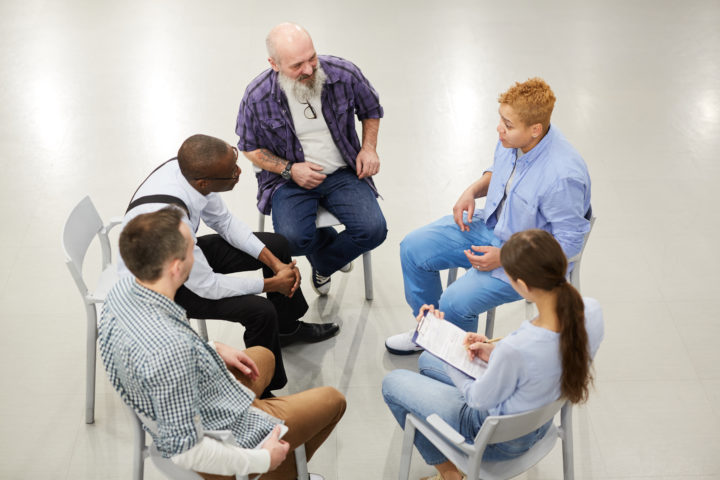Role of the Board
On this page

Who is responsible for safeguarding?
The Board would usually approve the appointing of a Designated Safeguarding Person/Officer (DSP) to have day-to-day responsibility for operational safeguarding. They may task the DSP with drafting a safeguarding policy, for ensuring that staff and volunteers have access to the safeguarding training that they need, and for being the contact person in most cases for people to raise their concerns. It should be absolutely clear who is expected to make a safeguarding report to the local authority. The Board may ask to have a deputy to the DSP, may ask for an ID verifier for dealing with DBS checks, require CEOs and management to have appropriate supervision of roles but the Board retains the responsibility to ensure that what is agreed, in policy and practice, will be resourced. They are also the ultimate decision-makers in complex circumstances, usually following information and guidance from their designated staff.
The Board may wish to appoint someone to the role of lead safeguarding board member (LSBM). This does not relieve the rest of the Board of their safeguarding responsibilities, but allows one member to champion the place of safeguarding within the organisation with the Board. The LSBM may ensure that safeguarding has sufficient priority and time on Board agendas, is properly resourced, may bring complex issues to the Board, and generally have strategic oversight of the safeguarding activity in the organisation. They may also act as a support or sounding board to the DSP and together they may share the remit to discuss safeguarding situations. The LSBM may also be a role model for developing a safeguarding culture across your organisation.
WCVA Safeguarding Community of Practice
Other resources

Safeguarding Responsibilities for Trustees
Take a look at our free e-learning course Safeguarding Responsibilities for Trustees which gives an introduction to this topic.

Safeguarding Self-assessment Tool
Your Board of Trustees can also make use of our Safeguarding Self-assessment Tool which will help you make sure that you are covering everything that is needed for good safeguarding governance.

The role of the Safeguarding Officer
A free e-learning course is available on The Role of the Safeguarding Officer to explain what the role may entail, the responsibilities and legal compliance.
Other sources of help
5-minute guides for charity trustees
Developing a safeguarding culture
All cultures tend to be led by decision makers, so ensure that your Trustees/Board/Directors/committee is made up of suitable people and that they have the skills to lead your organisation. Ensure their conduct is based on good practice and that they are visibly committed to promoting the importance of safeguarding as they will set the tone for the rest of the organisation.
To help people feel safe within your organisation, it is important to foster a culture of safeguarding, where everyone feels included, supported and able to raise concerns, or challenges, whenever they need to do so.
It helps to be open and transparent about your policies and procedures, so you may want to make them accessible, in part if not in their entirety (on your website, social media or staff/volunteer handout) and widely communicated, especially to your service users. Share your safeguarding messages and commitment as soon as possible with new contacts.
- Create a welcoming, positive and approachable safeguarding environment that is preventative, prepared and proactive
- Don’t wait to be asked or for something to go wrong before thinking about safeguarding
Board recruitment
A Board should be made up of suitable people to make the decisions for the organisation who will keep it true to the stated objectives, keep it solvent, and keep people safe. A Board should ideally include a broad range of skills and diverse approaches that will benefit their decision-making and, where necessary, challenge the management. Recruiting trustees is a serious task and should include ensuring that no individual is disqualified from becoming a trustee.
If the work of your organisation means that the Board will be making welfare decisions that affect child or adult beneficiaries or you are a substantial regulated activity provider your Trustees are eligible for enhanced (only) DBS checks. More information about this can be found in our DBS section.
Information on the rules about the automatic disqualification of trustees can be found here.
Reporting serious incidents
As part of their duties as a registered charity, the Charity Commission expects the Board to make reports to them regarding any serious incidents. This includes reporting incidents involving harm befalling a person through the actions or lack of action on the part of the charity. There may be other agencies and partners that would expect to be formally informed of a safeguarding incident, such as insurers, major funders, and inspection/regulation bodies, depending on your work. It is very easy for word to spread via social media and far better that your organisation should inform other bodies first before they hear it from other (less accurate) sources. If you are unsure whether to make a serious incident report, it is advisable to contact the Charity Commission as early as possible and seek their guidance.
More information is available from the Charity Commission how to report a serious incident here.
The Charity Commission holds the Board of a charity ultimately and collectively responsible for the safeguarding arrangements within their organisation. The Board must ensure they have the oversight to feel confident that they are doing all that they can reasonably do, to keep people safe. They should ask for periodic reports and ensure that they are made aware of serious incidents without waiting for scheduled meetings.
